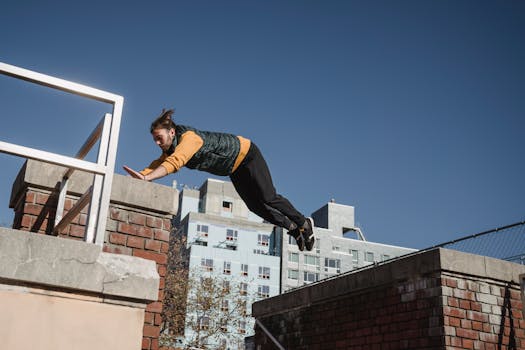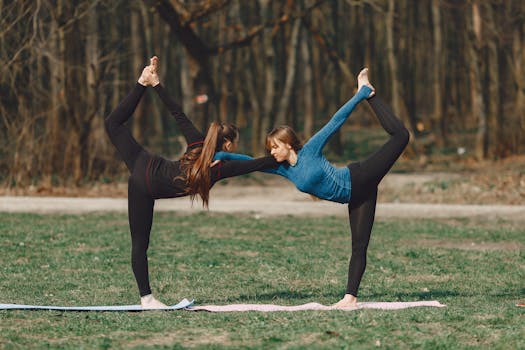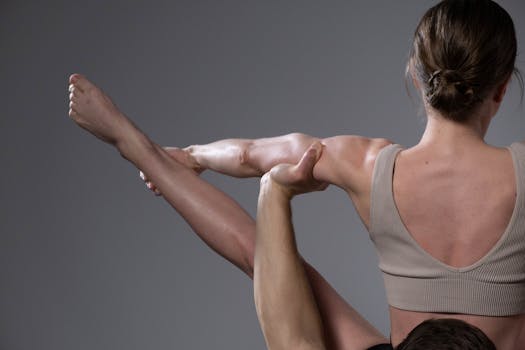
Unlocking Flexibility and Balance: Essential Yoga Poses for Every Practitioner
Takeaways: Flexibility and balance are crucial components of a healthy body and mind. Incorporating specific yoga poses into your routine can significantly enhance these qualities, leading to improved physical performance, reduced injury risk, and increased mental clarity. This article explores key yoga poses that promote flexibility and balance, along with tips for practicing them safely and effectively.
Yoga is not just an exercise; it’s a holistic approach to wellness that encompasses physical, mental, and spiritual health. Among its many benefits, improved flexibility and balance stand out as essential elements that can enhance your yoga practice and daily life. In this article, we will delve into various yoga poses specifically designed to boost flexibility and balance, providing you with a toolkit to enrich your practice.
Understanding Flexibility and Balance

The Importance of Flexibility in Yoga
Flexibility is crucial for safely executing yoga poses. Tight muscles can restrict movement and increase the risk of injury. By practicing yoga regularly, you can gradually improve your flexibility, which can lead to deeper stretches and a greater range of motion in your joints. This improvement not only helps in yoga but also in other physical activities, making it easier to perform daily tasks.
The Role of Balance in Yoga Practice
Balance is a fundamental aspect of many yoga poses. Strong balance enhances body awareness and control, enabling you to hold poses longer and with more stability. Improved balance also translates to better performance in other physical activities, whether you are running, dancing, or simply walking.
Top Yoga Poses for Flexibility
1. Downward-Facing Dog (Adho Mukha Svanasana)

How to Practice:
- Start on your hands and knees, with your wrists directly under your shoulders and knees under your hips.
- As you exhale, tuck your toes and lift your hips up and back, straightening your legs and arms.
- Press your heels toward the mat and relax your head between your arms.
- Hold for 5-10 breaths, feeling the stretch in your hamstrings and back.
2. Seated Forward Bend (Paschimottanasana)
This seated pose stretches the spine, hamstrings, and calves, promoting deep relaxation and flexibility.
How to Practice:
- Sit on the floor with your legs extended straight in front of you.
- Inhale and raise your arms overhead, lengthening your spine.
- Exhale as you bend forward from your hips, reaching for your feet or shins.
- Keep your back straight and breathe deeply, holding for 5-10 breaths.
3. Butterfly Pose (Baddha Konasana)
The Butterfly Pose opens up the hips and groin, improving flexibility in these areas.
How to Practice:
- Sit with your feet together and knees bent out to the sides.
- Hold your feet with your hands and gently press your knees toward the floor.
- Keep your back straight and breathe deeply, holding for 5-10 breaths.
Top Yoga Poses for Balance
1. Tree Pose (Vrksasana)

How to Practice:
- Stand tall with your feet together.
- Shift your weight to your left foot and place your right foot on your inner thigh or calf (avoid the knee).
- Bring your hands to your heart or raise them overhead.
- Hold for 5-10 breaths, then switch sides.
2. Warrior III (Virabhadrasana III)
This pose challenges your balance while strengthening the core and legs.
How to Practice:
- Start in a standing position and shift your weight onto your left foot.
- Lift your right leg behind you while extending your arms forward.
- Keep your body in a straight line from fingertips to toes.
- Hold for 5-10 breaths, then switch sides.
3. Eagle Pose (Garudasana)
The Eagle Pose improves balance and concentration while stretching the shoulders and hips.
How to Practice:
- Stand with your feet hip-width apart.
- Cross your right leg over your left and wrap your right foot around your left calf.
- Bring your arms in front of you, crossing them at the elbows and wrapping them.
- Hold for 5-10 breaths, then switch sides.
Conclusion

